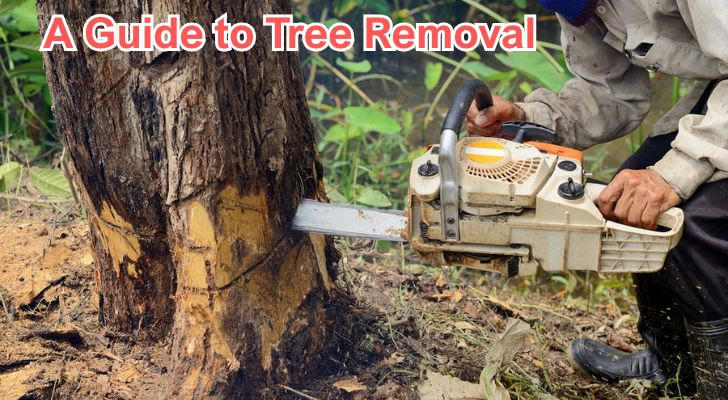A Guide to Tree Removal: What You Need to Know
Trees are essential to the environment and neighborhoods, providing shade, beauty, and improving air quality. However, there are times when tree removal becomes necessary—for safety concerns, property development, or tree health issues. Understanding the process of tree removal, its costs, and the factors to consider can help homeowners make informed decisions and ensure the job is done safely and responsibly.

Why Tree Removal May Be Necessary
Tree removal is rarely a first choice but sometimes the safest option. Common reasons for removing a tree include:
- Safety Hazards: Dead, diseased, or structurally unstable trees risk falling and causing damage or injury during storms or high winds.
- Property Damage: Trees growing too close to homes, power lines, or underground pipes can cause costly damage.
- Construction and Landscaping: Removing trees may be needed to clear land for new construction, gardens, or driveways.
- Tree Health: Trees beyond recovery from infections, infestations, or root rot often require removal to prevent spread to other vegetation.
Assessing the Need for Removal
Before deciding on removal, it’s important to have a professional arborist assess the tree’s health and structural integrity. An arborist can evaluate:
- The tree’s species and natural lifespan
- Signs of disease or pest infestation
- Damage to roots or trunk
- Proximity to structures or utilities
- Potential risks to people and property
Sometimes, pruning or treatment may preserve the tree without complete removal.
The Tree Removal Process
Tree removal involves more than simply cutting the trunk. The process includes:
1.Planning: A site assessment determines the safest approach, considering nearby structures, power lines, and access points.
2.Permits and Regulations: Certain locations require permits or have laws protecting specific tree species, especially mature or heritage trees. Checking local regulations is crucial to avoid legal issues.
3.Safety Measures: Due to the dangers involved, professionals use specialized equipment such as cranes, ropes, and protective gear to minimize risks.
4.Cutting and Removal: Trees can be removed in sections, starting from the top, to prevent damage to surroundings. Stumps can be left or ground down depending on property owner preference.
5.Cleanup and Disposal: Proper disposal of timber and debris is part of responsible tree removal, sometimes offering opportunities for recycling wood into mulch or firewood.
Costs to Consider
The cost of tree removal varies widely based on factors including:
- Tree size and height
- Location accessibility
- Complexity of removal (proximity to power lines or structures)
- Stump removal and disposal fees
- Local market rates for labor and equipment
According to the American Society of Consulting Arborists, removing a medium-sized tree can range from $400 to $1,200, while large or hazardous trees may exceed $2,000. Stump grinding typically adds several hundred dollars, depending on stump size.
Hiring a Professional
Tree removal is a job best left to certified arborists or licensed tree service companies. Improper removal can lead to property damage, personal injuries, or legal liabilities. When selecting a professional:
- Verify credentials and insurance coverage
- Ask for multiple estimates
- Request references and reviews
- Confirm permits and compliance with local laws
Environmental Considerations
Removing trees impacts the local ecosystem. Where possible, replacing removed trees with new plantings is encouraged. Some municipalities offer tree replacement programs or incentives for planting native species that enhance biodiversity.
Conclusion
Tree removal is sometimes necessary for safety, property, or health reasons, but it requires careful planning and professional expertise. Understanding the reasons, costs, and process can help homeowners navigate this complex task responsibly. Consulting an arborist ensures removal is the best option and is performed safely in line with local regulations.
